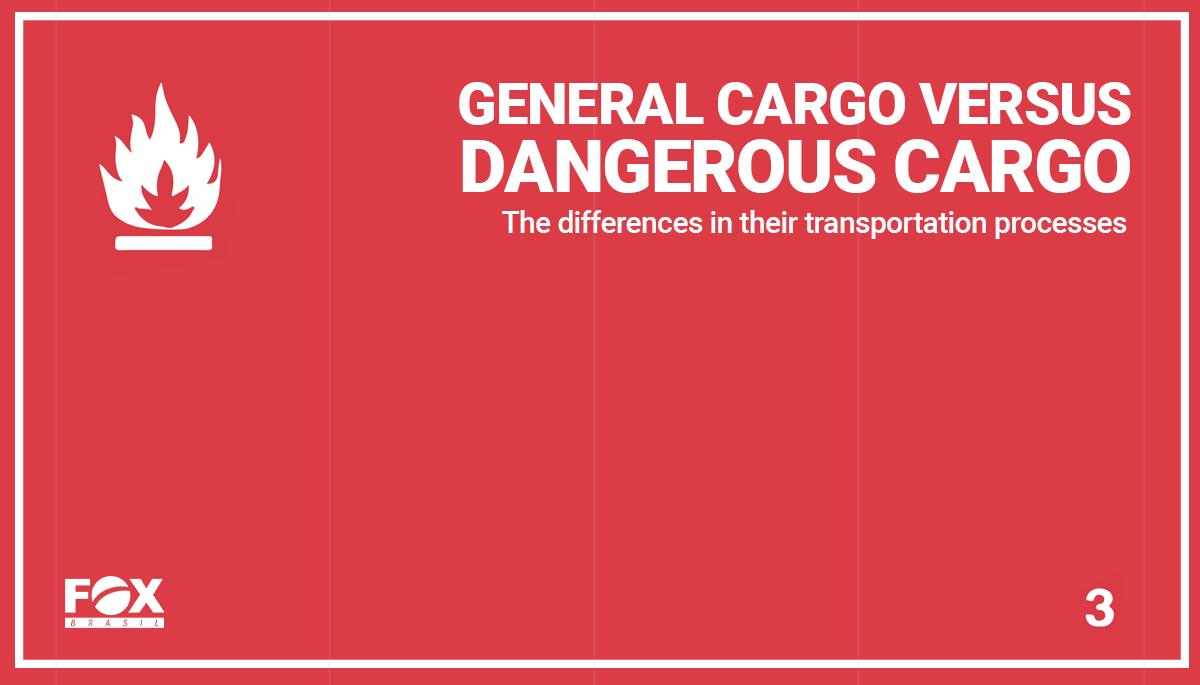General cargo versus Dangerous cargo: The differences in their transportation processes

Understand Logistics & Freight
When it comes to transporting goods, two distinct categories emerge: general cargo and dangerous cargo. These two types of cargo have significantly different transportation processes, each with its own set of challenges and safety considerations. Understanding the differences between them is crucial for shippers, logistics providers, and anyone involved in the transportation industry. In this blog post, we will explore the disparities between general cargo and dangerous cargo transportation and the precautions necessary to ensure safe and efficient shipping.
What is considered general cargo?
Before we can properly understand what dangerous cargo is, it is important to establish what general cargo is, because when a shipment isn’t dangerous it doesn’t make it necessarily general either.
A shipment is usually labeled as “general” when it is packaged, containerized, and can be transported without any special procedures or specific equipment. It can’t be temperature-controlled, fragile, liquid, or have any other kind of particularities.
The process of transporting general cargo is regular and simplified, as it is with most containerized cargo since it doesn’t require handling or special storage conditions, and can be shipped intermodal.
Then, what is dangerous cargo?
We consider dangerous cargo anything that can be harmful to people, properties, or the environment, and this usually includes products that are inflammable, radioactive, corrosive, and toxic, among other things that could cause damage in the occurrence of a leak or an accident during transportation.
The transport of dangerous cargo
For presenting risks, there are procedures that must be strictly followed when dealing with dangerous cargo, and it’s important to note that said procedures are not universal, meaning they differ from cargo to cargo. Some will demand the use of protective clothing and masks or a specialized crew, in other cases, simply gloves will do, it all depends on the nature of the cargo.
Due to that, dangerous cargo must be properly packaged and labeled before getting shipped out.
Transporting dangerous cargo involves an intricate and regulated process:
- Classification: Dangerous cargo is classified into different hazard classes based on the type and degree of danger it poses. These classes help determine the appropriate handling and transportation procedures.
Class 1 – Explosives;
Class 2 – Gases;
Class 3 – Flammable liquids;
Class 4 – Flammable solids;
Class 5 – Oxidizing agents;
Class 6 – Toxic and infectious substances;
Class 7 – Radioactive materials;
Class 8 – Corrosives;
Class 9 – Miscellaneous dangerous substances.
Under the classes, we also have the groups:
Group I – Indicates a high risk;
Group II – Indicates a medium risk;
Group III – Indicates a lower risk (but still a risk).
The labels are mandatory and are considered part of the necessary documents for the customs clearance process. They are visual representations of the content of the cargo and the dangers it presents, and are recognized beyond language barriers, significantly lowering the risks of mishandling such materials.
How do I label my shipment correctly?
If a dangerous shipment is not properly identified, it won’t need much more than that to cause accidents, which is why failing to do so results in severe fines for shippers, so one must be careful. The best way to avoid that is to have the support of a capacitated freight forwarder, who knows all of the procedures and the demands well and will prevent your operation from facing problems that, in the case of the transport of hazardous materials, can go far beyond just getting blocked by customs clearance.
- Packaging: Hazardous materials must be packaged and labeled according to strict international regulations, such as those outlined in the United Nations Recommendations on the Transport of Dangerous Goods (UNRTDG).
- Documentation: Transporting dangerous cargo involves extensive paperwork, including Material Safety Data Sheets (MSDS), shipping declarations, and additional documentation mandated by national and international authorities.
- Specialized Training: Anyone handling dangerous cargo, from truck drivers to warehouse workers, must undergo specialized training to ensure they understand the risks and how to respond in case of emergencies.
- Segregation and Storage: Dangerous cargo must be segregated from incompatible materials and stored in a manner that minimizes the risk of spills, leaks, or reactions between different substances.
- Regulatory Compliance: Complying with national and international regulations, such as the International Maritime Dangerous Goods (IMDG) Code for sea transport or the International Air Transport Association (IATA) Dangerous Goods Regulations for air transport, is crucial when transporting dangerous cargo.
In summary, the transportation of general cargo and dangerous cargo involves distinct processes due to their varying nature and potential risks. General cargo is characterized by its simplicity, versatility, and ease of transportation, while dangerous cargo demands specialized handling, packaging, documentation, and strict adherence to regulations to ensure safety.
Understanding the differences between these two cargo types is essential for all stakeholders in the transportation industry. It is imperative to stay informed about the latest regulations and best practices for transporting both general and dangerous cargo to ensure the safety of goods, personnel, and the environment. Whether you are a shipper, logistics provider, or a consumer, being knowledgeable about these differences can help you make informed decisions and contribute to the efficient and safe movement of goods worldwide.